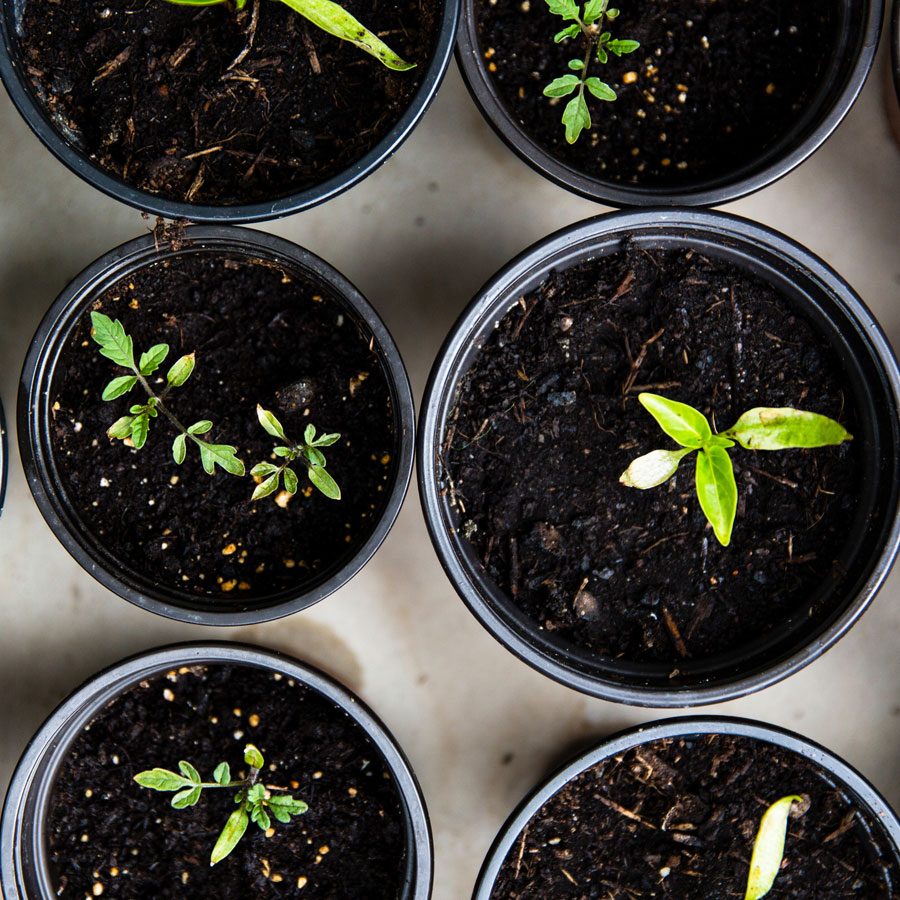 Photo by Markus Spiske on Unsplash
Photo by Markus Spiske on Unsplash
Can you "water" plants with other liquids?
- Challenging
- A Bit Messy
- 15 Minutes each day; 1-2 weeks
- Indoor
Water seeds with other liquids and see if they grow.
Most seeds need warmth, light, and water to start growing. But what happens when you replace water with other types of liquids? Test them out using this experiment!
You Will Need
Four plastic cups
Water, and three other liquids. Choose any liquids you want, but some suggestions are saltwater, sugar water, vinegar, soda, juice, or even dish soap!
Dirt
Seeds - enough for 3 for each cup, any kind you want to try to grow. Examples of fast-growing seeds are marigolds, sunflowers, beans, and peas.
4 labels (one for each cup)
Liquid measuring cup
Pencil
Paper (to document your experiment and your findings)
Directions
Note: For any experiment, it is important to control the environment so there is only one variable (or one thing changing, which in this case is the liquid you are using). Make sure the seeds are all the same variety, that the cups are set up exactly the same way, and the cups are kept in the same area while you wait for the plants to grow.
- Ask your scientist to pick 3 different liquids.
- On the sheet of paper, write down which liquids you have decided to use.
- Ask your young scientist to make predictions. What do they think is going to happen with each seed? Which will grow the fastest? Which will grow the slowest? Which will not grow at all?
- Gather the water and your three other liquids. If you are mixing liquids, write down the measurements you use so they can be made the same way each day. (For example, if you mix 1 teaspoon of salt into 1 cup of water for saltwater, repeat that same ratio the next time you water your plants.)
- Label each cup with the name of the liquid you are planning to use.
- Fill each cup about ⅓ full with dirt.
- Add 3 seeds to each cup and cover with a little dirt. Make sure to not plant the seeds too deep into the soil or they might not get enough light to grow.
- Place the cups in a sunny, warm spot.
- Decide on the amount of liquid you will use to water each plant. We recommend 2 to 4 tablespoons of liquid in each cup, making sure not to drown the seeds in too much liquid.
- Using the labels on each cup as a guide, encourage your young scientist to measure the liquid needed, and pour it into the corresponding cup.
- Over the next several days, keep adding the designated liquid to each cup, being sure to keep adding the same amount. Only add when the soil is dry to avoid overwatering the plants.
- Encourage your scientist to make observations each day, and note them on the piece of paper. What do they see? What’s happening with the seed using plain water? How does it compare with the other seeds?
Experiment Extensions
- Try this experiment using other variables. For example, water all the plants with plain water, but try varying the amount of light they get. Or try growing one plant in a warm spot and another in a cold spot. Try it and see what happens!
How it works
Plants have been growing for millions of years, making their own food from water, carbon dioxide, and light. When you try to grow plants using another liquid, the molecules (or what makes up that liquid) are shaped differently from water molecules. Because of their different shape, they block the process of photosynthesis from occurring, so the seeds do not know they should grow!
Key Words
- Molecule
- The smallest unit of a substance that has all the properties of that substance. For example, a water molecule is the smallest unit that can still be considered water.
- Photosynthesis
- The process plants use to make their own food, using sunlight, water, and carbon dioxide.
